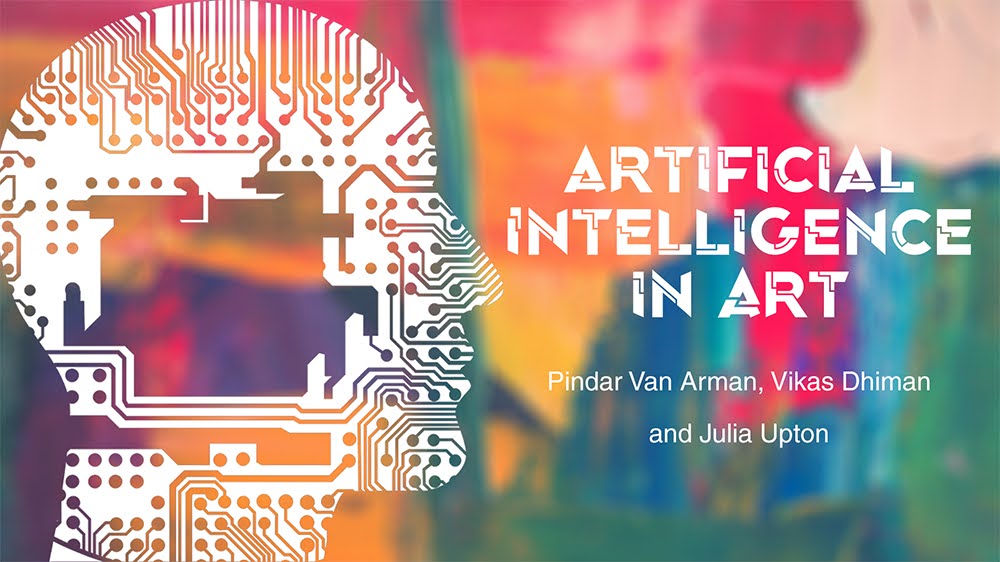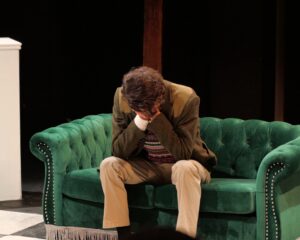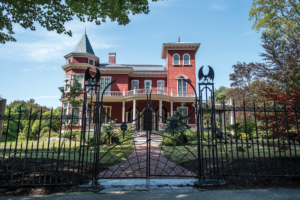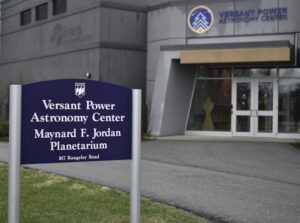On March 3, the University of Maine AI presented the “AI in Art” webinar, which discussed some of the ways in which artificial intelligence can be used as an artistic tool. This webinar is part of a series the center hosts that showcases the different ways in which artificial intelligence technology can be utilized.
The “AI in Art” webinar was sponsored by the Institute of Electrical and Electronics Engineers (IEEE) and was moderated by Dr. Julia Upton, the associate professor of mathematics at Husson University.
Pinder Van Arman, an AI artist and roboticist whose work focuses on “painting robots that explore the differences between human and computational creativity,” presented at the webinar. Arman shared his experience with creating paintings using artificial intelligence and spoke about making AI art more accessible to mainstream audiences.
“I started in 2005 building my own robots,” Arman said. “At first they were really simple algorithms like ‘connect the dots’ and ‘paint by numbers.’ As time went on I started adding algorithms to improve the AI.”
Arman then explained how creating artificial intelligence that was capable of creating more complex artwork wasn’t something that could be built overnight. He would add algorithms every month, and eventually once a year. Arman went into detail explaining some of the algorithms he added over time to improve his artificially creative robots, before revealing the one thing he added that ultimately led to his breakthrough in AI art: a camera.
“The big thing I added, and this is the breakthrough that really opened up the art for me and also got me the accolades, is that I added a camera, and the camera would actually watch what the robot was doing and it would do feedback loops,” Arman said. “When I added these cameras I started recording what the robot was doing and started programming algorithms to respond to what was emerging on the canvas…which in a way is similar to how a lot of artists paint.”
Arman described the feedback loops as a similar process to when an artist will paint a couple strokes and then take a step back to see how the marks look on the canvas before continuing to paint.
This gradual process of adding algorithms and viewing feedback loops is essentially the key to creating art with artificial intelligence.
Assistant Professor of Electrical and Computer Engineering at UMaine Vikas Dhiman also spoke at the webinar on Thursday. His presentation focused on the art behind artificial intelligence “imitating human-driving using inverse reinforcement learning.”
“While I’ll share my thoughts on AI and art, my work is primarily about teaching robots how to navigate the world and how to understand [the] world around them,” Dhiman said.
Dhiman explains that teaching a robot to do anything is difficult and the equations involved aren’t as straightforward as something you would see in physics, for example. He then explains what reinforcement is, which is the foundation of his research.
“In reinforcement learning we divide the system into two parts, the environment and the agent,” Dhiman said. “The agent is the robot, and the environment is everything else. The agent takes some actions on the environment and then the environment changes and then the environment gives back the agent some observations and based on what the environment is the agent gets a reward or not. It can get a high reward if something good happens, or a low reward if something bad happens.”
Dhiman then provided an example about reinforcement when looking at imitating human driving.
“If a car runs into a sidewalk or curb it gets a low reward but if it’s driving consistently in the lane then it gets a high reward,” Dhiman said. “Rewards are telling the robot what to do, not how [to] do it, and reinforcement learning is responsible for figuring out how to do it.”
In a world where technological advancements are being made all around us, seeing the relationship between artificial intelligence and art is fascinating. Anyone interested in the relation between art and technology who is interested in learning more about AI can visit ai.umaine.edu or reach out directly via email um.ai@maine.edu.
April 5, 2022 — The name of the host of the “AI in Art” webinar has been corrected for accuracy.










